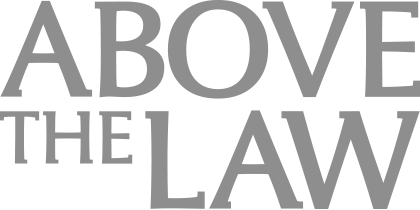Mastering The Meeting -- Tips For Prep
You’d be surprised at how often those who ‘call for’ a meeting either haven’t identified a purpose or thought critically about what they want to achieve in the time scheduled.
 How many times have you sat in a meeting and been completely lost — unsure of the purpose? Or wondered why you were invited? Or worse — thought to yourself that a (succinct) email would have sufficed?
How many times have you sat in a meeting and been completely lost — unsure of the purpose? Or wondered why you were invited? Or worse — thought to yourself that a (succinct) email would have sufficed?
Before I came in-house, I had no idea that there were so many meetings! And to add insult to injury, I had no idea that so many of them could be unproductive.
But after six years of (too) many frustrating, time-suck meetings, I have come to the conclusion that meetings themselves are not the culprit. Rather, the success of a meeting depends on how they are executed, and in my opinion, meetings can be an effective tool for getting things done, if executed with intentionality and preparation.

Data Privacy And Security With Gen AI Models
Here are some initial tips for mastering the meeting preparation:
Identify A Clear Purpose For The Meeting
While this may seem obvious, you’d be surprised at how often those who “call for” a meeting either haven’t identified a purpose or thought critically about what they want to achieve in the time scheduled. (I think there’s a myth floating around that just having a meeting is being productive.)
Or if a meeting organizer has a general idea of why they want a meeting, they don’t always share it in the meeting invitation or at the beginning of the meeting. Rather, more often than not, there’s a meeting invitation without context — and the title or subject line of the meeting is not descriptive. (This is probably why I have shown up to meetings on occasion to discover, only at the end, that my participation was not necessary.)
Sponsored

How Thomson Reuters Supercharged CoCounsel With Gen AI Advances


Tackling Deposition Anxiety: How AI Is Changing The Way Lawyers Do Depositions

Curbing Client And Talent Loss With Productivity Tech

Tackling Deposition Anxiety: How AI Is Changing The Way Lawyers Do Depositions
Please create good meeting karma and don’t be this meeting organizer.
Instead, take a brief moment to articulate why you need a meeting (and if you can’t, then you probably don’t need one, at least not yet) and make sure you share it, even if it feels like stating the obvious.
This is not an exhaustive list but to give you an idea:
- Is the purpose of the meeting to share information that you do not want to send in an email? (We are in-house counsel after all.)
- Is the purpose of the meeting to share information that is too overwhelming in email form or needs explanation or context?
- Is the purpose of the meeting to brainstorm or benchmark?
- Do you need a standing check-in for project statuses (and to apply some pressure for progress)?
- Do you need the time to discuss a more complex topic and come to a decision?
Curate Invitation List Strategically
Sponsored

Data Privacy And Security With Gen AI Models

Legal Contract Review in Under 10 Minutes? Here’s How
Now that you know why you’re meeting, evaluate who needs to be invited to accomplish your purpose. While I certainly understand that our organizations are complex, and probably many stakeholders want to stay in the loop on any given topic or project, that doesn’t mean that everyone needs to be invited to the working meeting or that anyone should be invited just as an FYI.
In fact, if your invite list starts growing unwieldy, this might prompt you to realize that you may need more than one meeting to accomplish your why. And as you evaluate each person, consider what their role is — and how you might email them separately with an ask or work beforehand to ensure your meeting will be as productive as possible.
For example, if the purpose of your meeting is to come to a decision, consider who has the authority to make the decision, what information they might want, and who has that information.
With some intentionality, you may be able to avoid the “kick-the-can-down-the-road” or “delay-the-decision-for-more-data” frustration if you have the right people and the best information you can for the meeting.
Create An Agenda
This is probably another obvious suggestion, but in my experience in-house, very few meetings have a clear agenda, which may be one reason why they can go off track so easily. You may want to push back on the need for an agenda, if you already have a very clear purpose for the meeting — but creating a realistic agenda (with suggested time allotments) to accomplish your why can help the meeting stay focused (and also help you determine if you have enough time scheduled).
If you send out the agenda before the meeting and give people an opportunity to add — and also preview the agenda at the beginning of the meeting, it can help “set the tone” that anything else introduced once you start the meeting will have to go a “parking lot” to be discussed offline or a different meeting.
I can probably guess what you’re thinking — all this work before the actual meeting? Yes — it can seem like a lot, but with regular practice this will become second nature to you and, better yet, ensure that the actual meetings aren’t a waste of your time.
Stay tuned for tips on the actual meeting.
 Meyling “Mey” Ly Ortiz is in-house at Toyota Motor North America. Her passions include mentoring, championing belonging, and a personal blog: TheMeybe.com. At home, you can find her doing her best to be a “fun” mom to a toddler and preschooler and chasing her best self on her Peloton. You can follow her on LinkedIn (https://www.linkedin.com/in/meybe/). And you knew this was coming: her opinions are hers alone.
Meyling “Mey” Ly Ortiz is in-house at Toyota Motor North America. Her passions include mentoring, championing belonging, and a personal blog: TheMeybe.com. At home, you can find her doing her best to be a “fun” mom to a toddler and preschooler and chasing her best self on her Peloton. You can follow her on LinkedIn (https://www.linkedin.com/in/meybe/). And you knew this was coming: her opinions are hers alone.







